New Biologically Hybrid Pharmacophore Thiazolidinone-Based Indole Derivatives: Synthesis, In Vitro Αlpha-Amylase and Αlpha-Glucosidase Along with Molecular Docking Investigations
Abstract
1. Introduction
2. Results and Discussion
2.1. Chemistry
2.2. In Vitro Alpha-Amylase and Alpha-Glucosidase Inhibitory Activities
Structure Activity Relationship (SAR) Studies for α-Amylase and α-Glucosidase Inhibitory Activity
2.3. Molecular Docking Study
3. Experimental Section
3.1. Material and Methods
3.2. General Procedure for the Synthesis of Thiazolidinone-Based Indole Derivatives (1–20)
4. Conclusions
Supplementary Materials
Author Contributions
Funding
Institutional Review Board Statement
Informed Consent Statement
Data Availability Statement
Conflicts of Interest
Sample Availability
References
- Atlas, D. International Diabetes Federation. IDF Diabetes Atlas, 7th ed.; International Diabetes Federation: Brussels, Belgium, 2015; p. 33. [Google Scholar]
- Gin, H.; Rigalleau, V. Post-prandial hyperglycemia. post-prandial hyperglycemia and diabetes. Diabetes Metab. 2000, 26, 265–272. [Google Scholar] [PubMed]
- Lordan, S.; Smyth, T.J.; Soler-Vila, A.; Stanton, C.; Ross, R.P. The α-amylase and α glucosidase inhibitory effects of Irish seaweed extracts. Food Chem. 2013, 141, 2170–2176. [Google Scholar] [CrossRef] [PubMed]
- Lebovitz, H.E. α-glucosidase inhibitors. Endocrinol. Metab. Clin. N. Am. 1997, 26, 539–551. [Google Scholar] [CrossRef]
- Van de Laar, F.A. Alpha-glucosidase inhibitors in the early treatment of type 2 diabetes. Vasc. Health Risk Manag. 2008, 4, 1189. [Google Scholar] [CrossRef] [PubMed]
- Etxeberria, U.; de la Garza, A.L.; Campión, J.; Martínez, J.A.; Milagro, F.I. Antidiabetic effects of natural plant extracts via inhibition of carbohydrate hydrolysis enzymes with emphasis on pancreatic alpha amylase. Expert Opin. Ther. Targets 2012, 16, 269–297. [Google Scholar] [CrossRef] [PubMed]
- Fatmawati, S.; Shimizu, K.; Kondo, R. Ganoderol B: A potent α-glucosidase inhibitor isolated from the fruiting body of Ganoderma lucidum. Phytomedicine 2011, 18, 1053–1055. [Google Scholar] [CrossRef] [PubMed]
- Kawamura-Konishi, Y.; Watanabe, N.; Saito, M.; Nakajima, N.; Sakaki, T.; Katayama, T.; Enomoto, T. Isolation of a new phlorotannin, a potent inhibitor of carbohydrate-hydrolyzing enzymes, from the brown alga Sargassum patens. J. Agric. Food Chem. 2012, 60, 5565–5570. [Google Scholar] [CrossRef]
- Orhan, N.; Aslan, M.; Şüküroğlu, M.; Orhan, D.D. In vivo and in vitro antidiabetic effect of Cistus laurifolius L. and detection of major phenolic compounds by UPLC–TOF-MS analysis. J. Ethnopharmacol. 2013, 146, 859–865. [Google Scholar] [CrossRef]
- Panwar, H.; Calderwood, D.; Grant, I.R.; Grover, S.; Green, B.D. Lactobacillus strains isolated from infant faeces possess potent inhibitory activity against intestinal alpha-and beta-glucosidases suggesting anti-diabetic potential. Eur. J. Nutr. 2014, 53, 1465–1474. [Google Scholar] [CrossRef]
- Ali, R.B.; Atangwho, I.J.; Kuar, N.; Ahmad, M.; Mahmud, R.; Asmawi, M.Z. In vitro and in vivo effects of standardized extract and fractions of Phaleria macrocarpa fruits pericarp on lead carbohydrate digesting enzymes. BMC Complement. Altern. Med. 2013, 13, 39. [Google Scholar] [CrossRef]
- Kim, K.T.; Rioux, L.E.; Turgeon, S.L. Alpha-amylase and alpha-glucosidase inhibition is differentially modulated by fucoidan obtained from Fucus vesiculosus and Ascophyllum nodosum. Phytochemistry 2014, 98, 27–33. [Google Scholar] [CrossRef] [PubMed]
- Nash, R.J.; Kato, A.; Yu, C.-Y.; Fleet, G.W.J. Iminosugars as therapeutic agents: Recent advances and promising trends. Future Med. Chem. 2011, 3, 1513–1521. [Google Scholar] [CrossRef] [PubMed]
- Chennaiah, A.; Dahiya, A.; Dubbu, S.; Vankar, Y.D. A Stereoselective Synthesis of an IminoGlycal: Application in the Synthesis of (−)-1-Epi -Adenophorine and a Homoiminosugar. Eur. J. Org. Chem. 2018, 2018, 6574–6581. [Google Scholar] [CrossRef]
- Chennaiah, A.; Bhowmick, S.; Vankar, Y.D. Conversion of glycals into vicinal-1,2-diazides and 1,2-(or 2,1)-azidoacetates using hypervalent iodine reagents and Me3SiN3. Application in the synthesis of N-glycopeptides, pseudo-trisaccharides and an iminosugar. RSC Adv. 2017, 7, 41755–41762. [Google Scholar] [CrossRef]
- Horne, G.; Wilson, F.X.; Tinsley, J.; Williams, D.H.; Storer, R. Iminosugars past, present and future: Medicines for tomorrow. Drug Dis. Today 2011, 16, 107–118. [Google Scholar] [CrossRef] [PubMed]
- Mohamed, E.A.H.; Siddiqui, M.J.A.; Ang, L.F.; Sadikun, A.; Chan, S.H.; Tan, S.C.; Asmawi, M.Z.; Yam, M.F. Potent α-glucosidase and α-amylase inhibitory activities of standardized 50% ethanolic extracts and sinensetin from Orthosiphon stamineus Benth as anti-diabetic mechanism. BMC Complement. Altern. Med. 2012, 12, 176. [Google Scholar] [CrossRef] [PubMed]
- Perez-Gutierrez, R.M.; Damian-Guzman, M. Meliacinolin: A potent α-glucosidase and α-amylase inhibitor isolated from Azadirachta indica leaves and in vivo antidiabetic property in streptozotocin-nicotinamide-induced type 2 diabetes in mice. Biol. Pharm. Bull. 2012, 35, 1516–1524. [Google Scholar] [CrossRef] [PubMed]
- Patel, D.; Kumari, P.; Patel, N. Synthesis and characterization of some new thiazolidinones containing coumarin moiety and their antimicrobial study. Arch. Appl. Sci. Res. 2010, 2, 68–75. [Google Scholar]
- Mishra, R.; Tomar, I.; Singhal, S.; Jha, K.K. Facile synthesis of thiazolidinones bearing thiophene nucleus as antimicrobial agents. Der Pharma Chem. 2012, 4, 489–496. [Google Scholar]
- Rao, A.; Carbone, A.; Chimirri, A.; De Clercq, E.; Monforte, A.M.; Monforte, P.; Pannecouque, C.; Zappalà, M. Synthesis and anti-HIV activity of 2, 3-diaryl-1, 3-thiazolidin-4-ones. Il Farm. 2003, 58, 115–120. [Google Scholar] [CrossRef]
- Jain, A.K.; Vaidya, A.; Ravichandran, V. SK kashaw, RK Agrawal. Bioorg. Med. Chem. 2012, 20, 3378–3395. [Google Scholar] [CrossRef] [PubMed]
- Küçükgüzel, Ş.G.; Oruç, E.E.; Rollas, S.; Şahin, F.; Özbek, A. Synthesis, characterisation and biological activity of novel 4-thiazolidinones, 1, 3, 4-oxadiazoles and some related compounds. Eur. J. Med. Chem. 2002, 37, 197–206. [Google Scholar] [CrossRef]
- Rahim, F.; Zaman, K.; Ullah, H.; Taha, M.; Wadood, A.; Javed, M.T.; Rehman, W.; Ashraf, M.W.; Uddin, R.; Uddin, I.; et al. Synthesis of 4-thiazolidinone analogs as potent in vitro anti-urease agents. Bioorg. Chem. 2015, 63, 123–131. [Google Scholar] [CrossRef] [PubMed]
- Ganavi, D.; Ramu, R.; Kumar, V.; Patil, S.M.; Martiz, R.M.; Shirahatti, P.S.; Sathyanarayana, R.; Poojary, B.; Holl, B.S.; Poojary, V.; et al. In vitro and in silico studies of fluorinated 2, 3-disubstituted thiazolidinone-pyrazoles as potential α-amylase inhibitors and antioxidant agents. Arch. Pharm. 2022, 355, 2100342. [Google Scholar] [CrossRef]
- Kaur, R.; Kumar, R.; Dogra, N.; Yadav, A.K. Design, synthesis, biological evaluations and in silico studies of sulfonate ester derivatives of 2-(2-benzylidenehydrazono) thiazolidin-4-one as potential α-glucosidase inhibitors. J. Mol. Struct. 2022, 1247, 131266. [Google Scholar] [CrossRef]
- Kharb, M.; Jat, R.K.; Parjapati, G.; Gupta, A. Introduction to molecular docking software technique in medicinal chemistry. Int. J. Drug Res. Technol. 2012, 2, 189–197. [Google Scholar]
- Li, Z.; Gu, J.; Zhuang, H.; Kang, L.; Zhao, X.; Guo, Q. Adaptive molecular docking method based on information entropy genetic algorithm. Appl. Soft Comput. 2015, 26, 299–302. [Google Scholar] [CrossRef]
- Rao, C.M.M.P.; Naidu, N.; Priya, J.; Rao, K.P.C.; Ranjith, K.; Shobha, S.; Chowdary, B.S.; Siddiraju, S. Molecular docking and dynamic simulations of benzimidazoles with beta-tubulins. Bioinformation 2021, 17, 404. [Google Scholar]
- Khan, S.; Ullah, H.; Rahim, F.; Nawaz, M.; Hussain, R.; Rasheed, L. Synthesis, in vitro α-amylase, α-glucosidase activities and molecular docking study of new benzimidazole bearing thiazolidinone derivatives. J. Mol. Struct. 2022, 1269, 133812. [Google Scholar] [CrossRef]
- Ghose, A.K.; Crippen, G.M. Atomic physicochemical parameters for three-dimensional structure-directed quantitative structure-activity relationships. 2. Modeling dispersive and hydrophobic interactions. J. Chem. Inf. Comput. Sci. 1987, 27, 21–35. [Google Scholar]
- Ertl, P.; Rohde, B.; Selzer, P. Fast calculation of molecular polar surface area as a sum of fragment-based contributions and its application to the prediction of drug transport properties. J. Med. Chem. 2000, 43, 3714–3717. [Google Scholar]

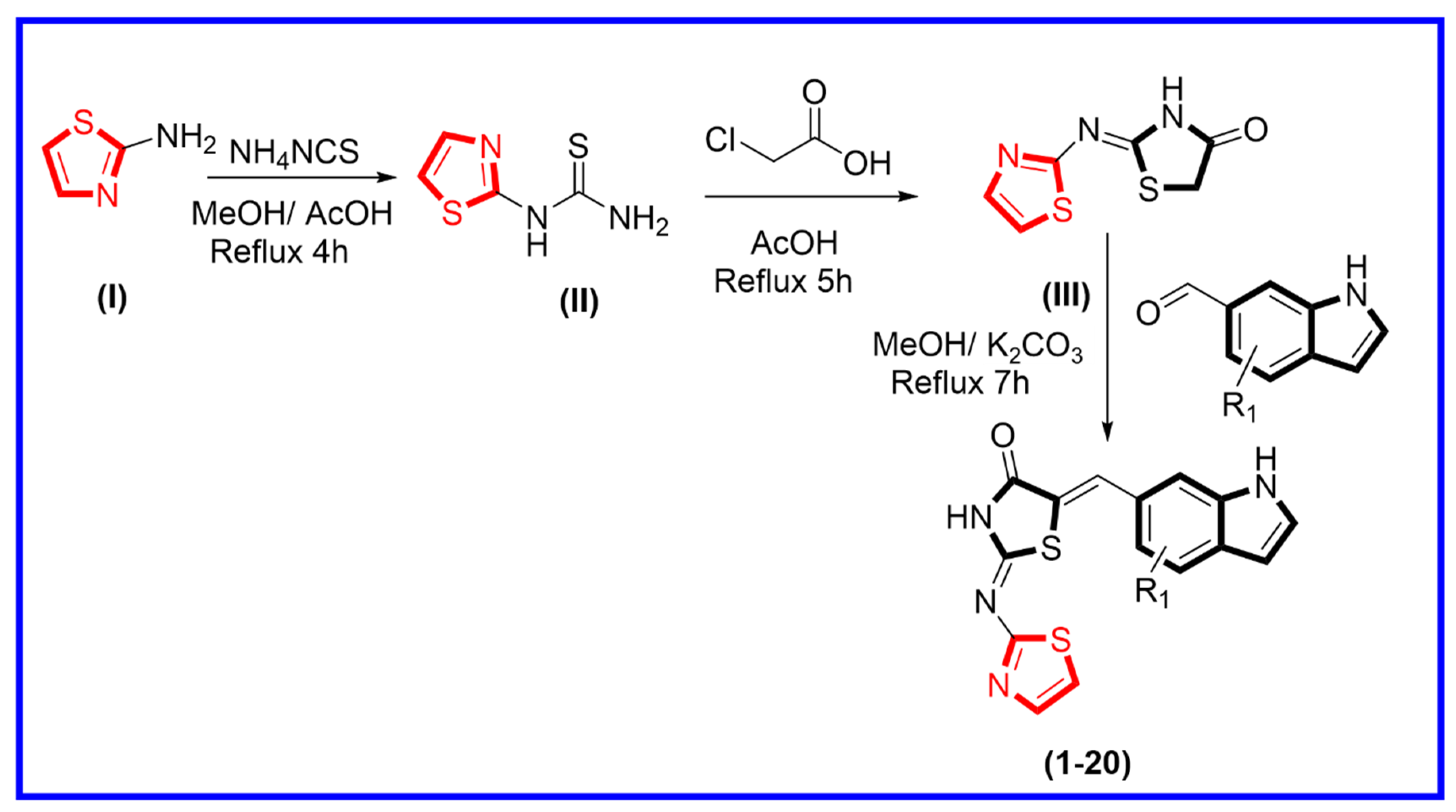

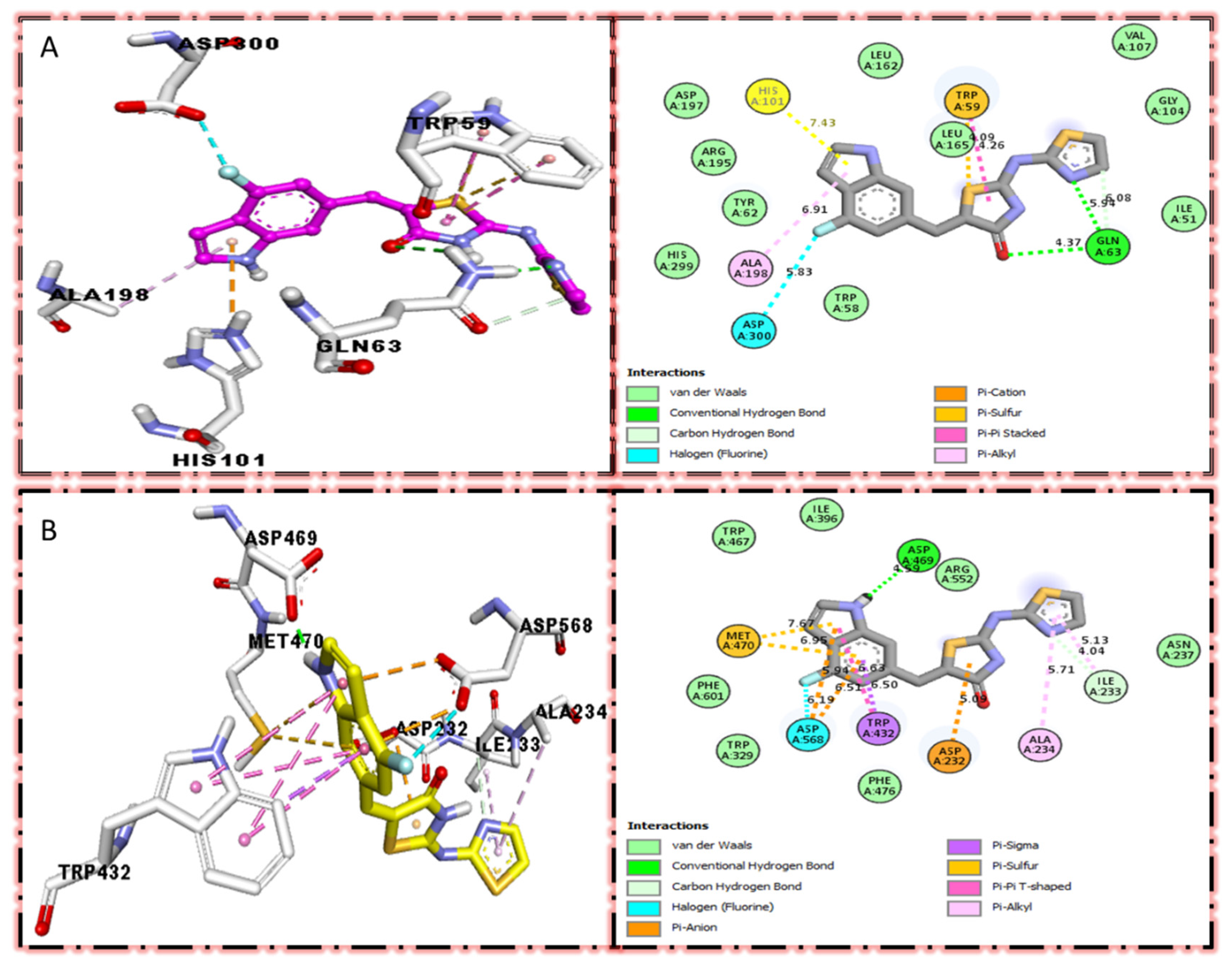
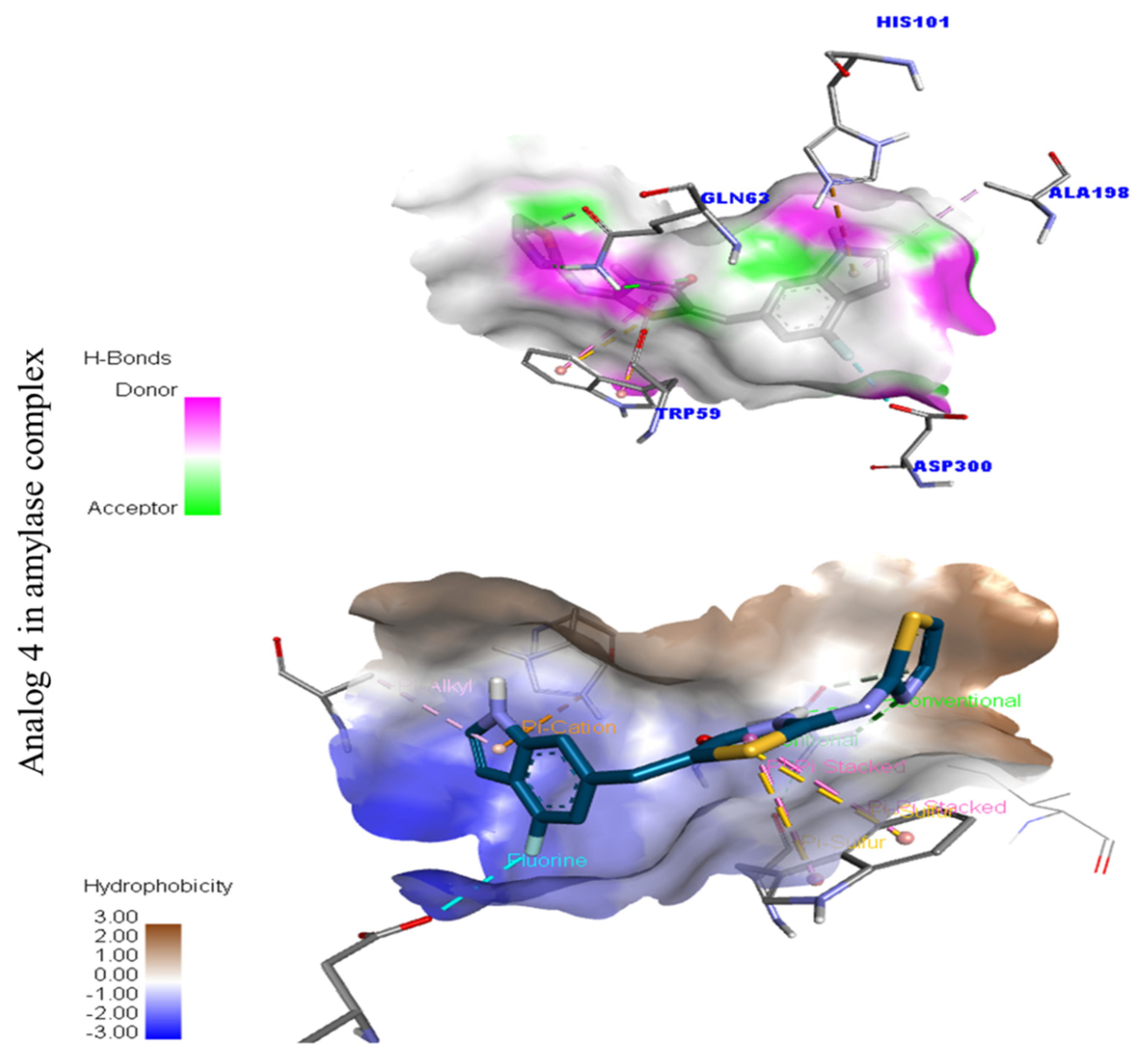

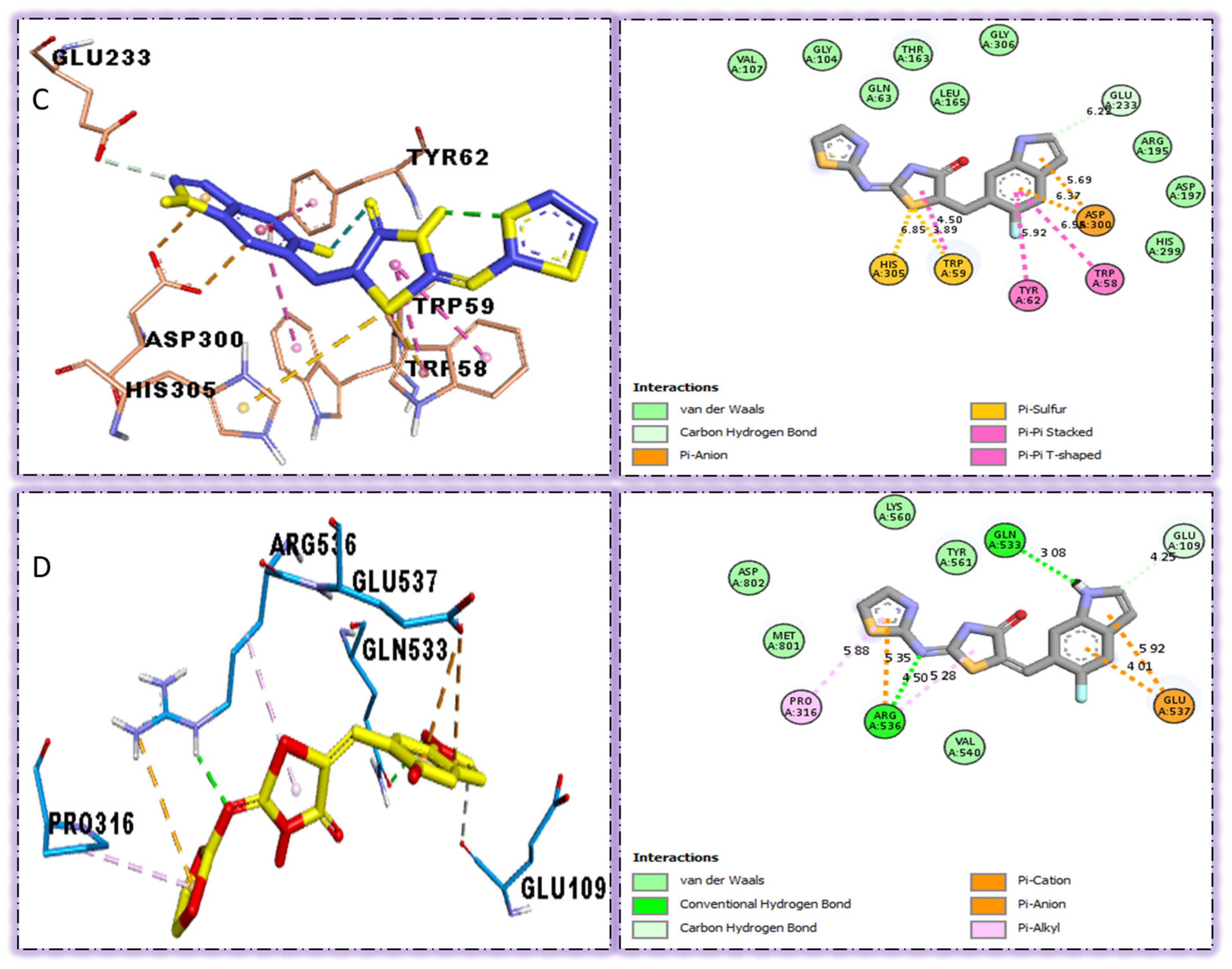
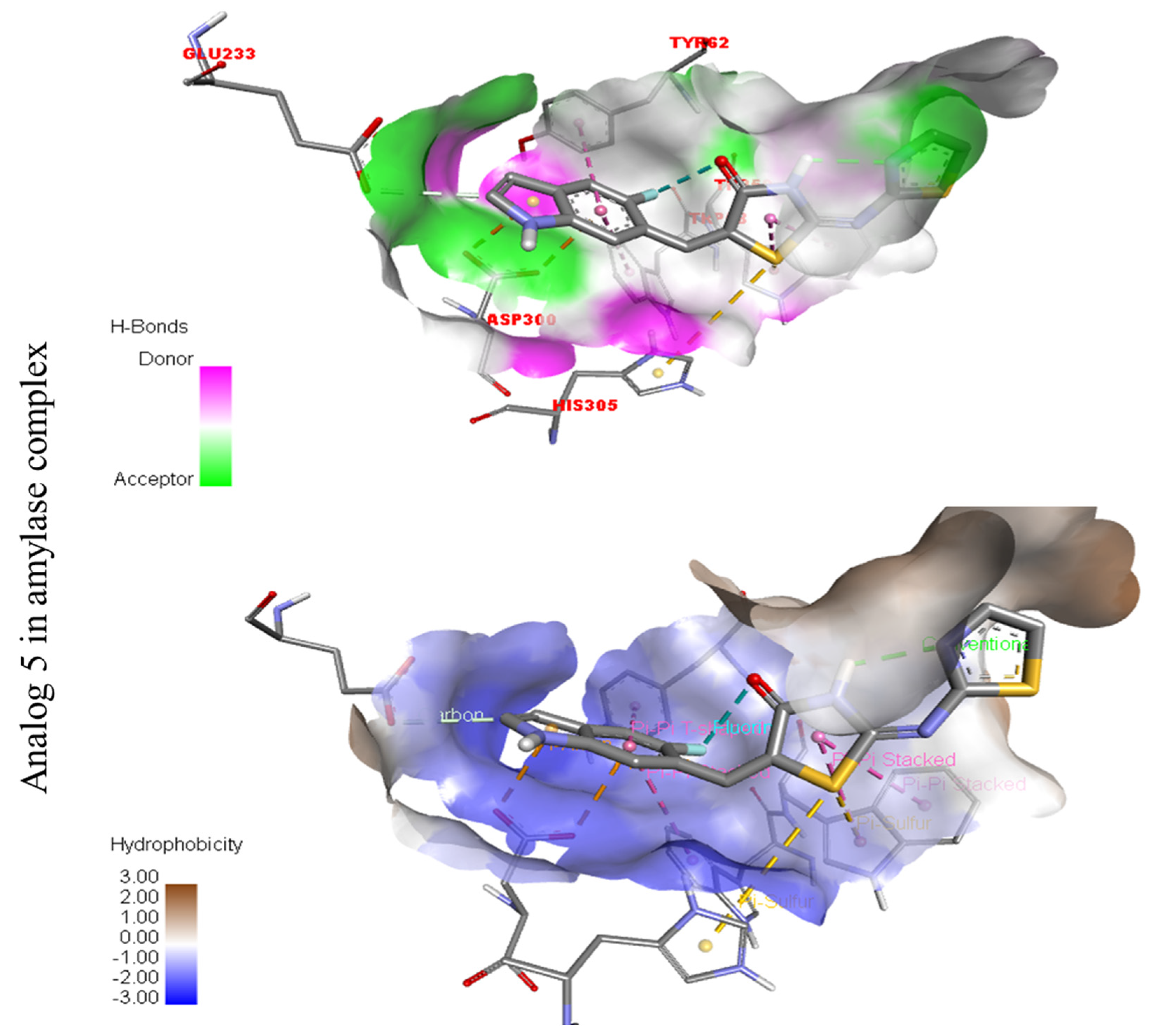
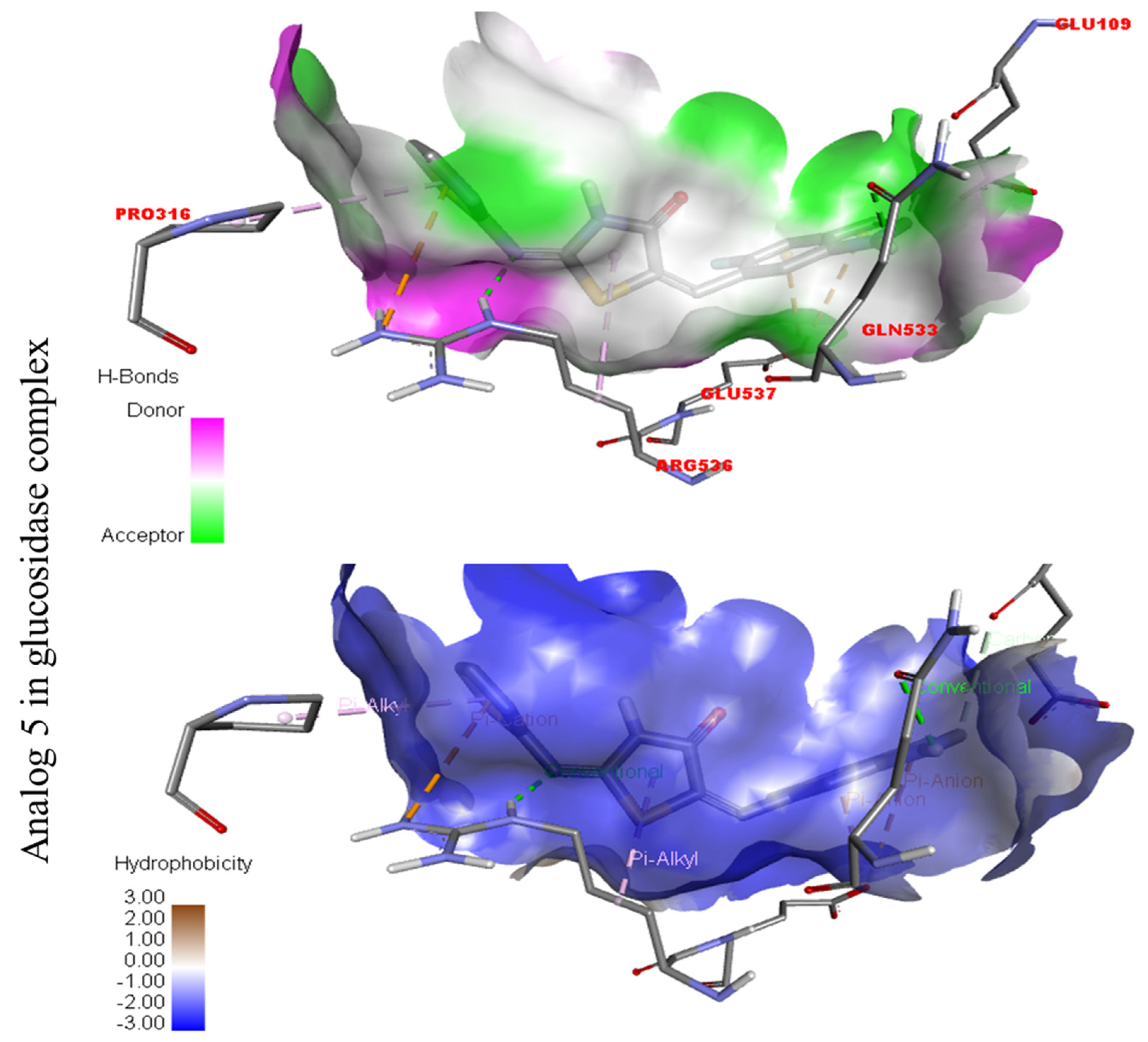


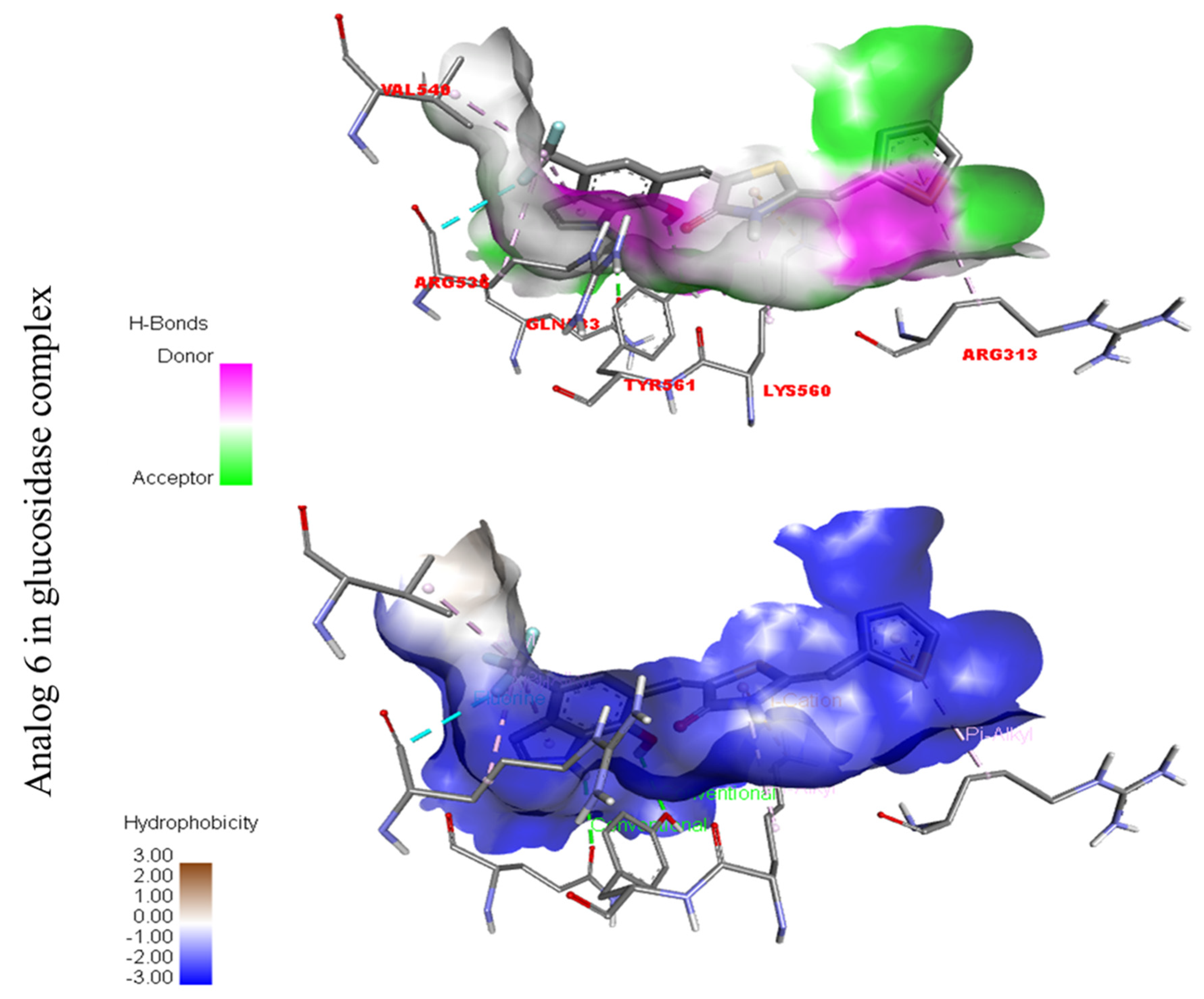
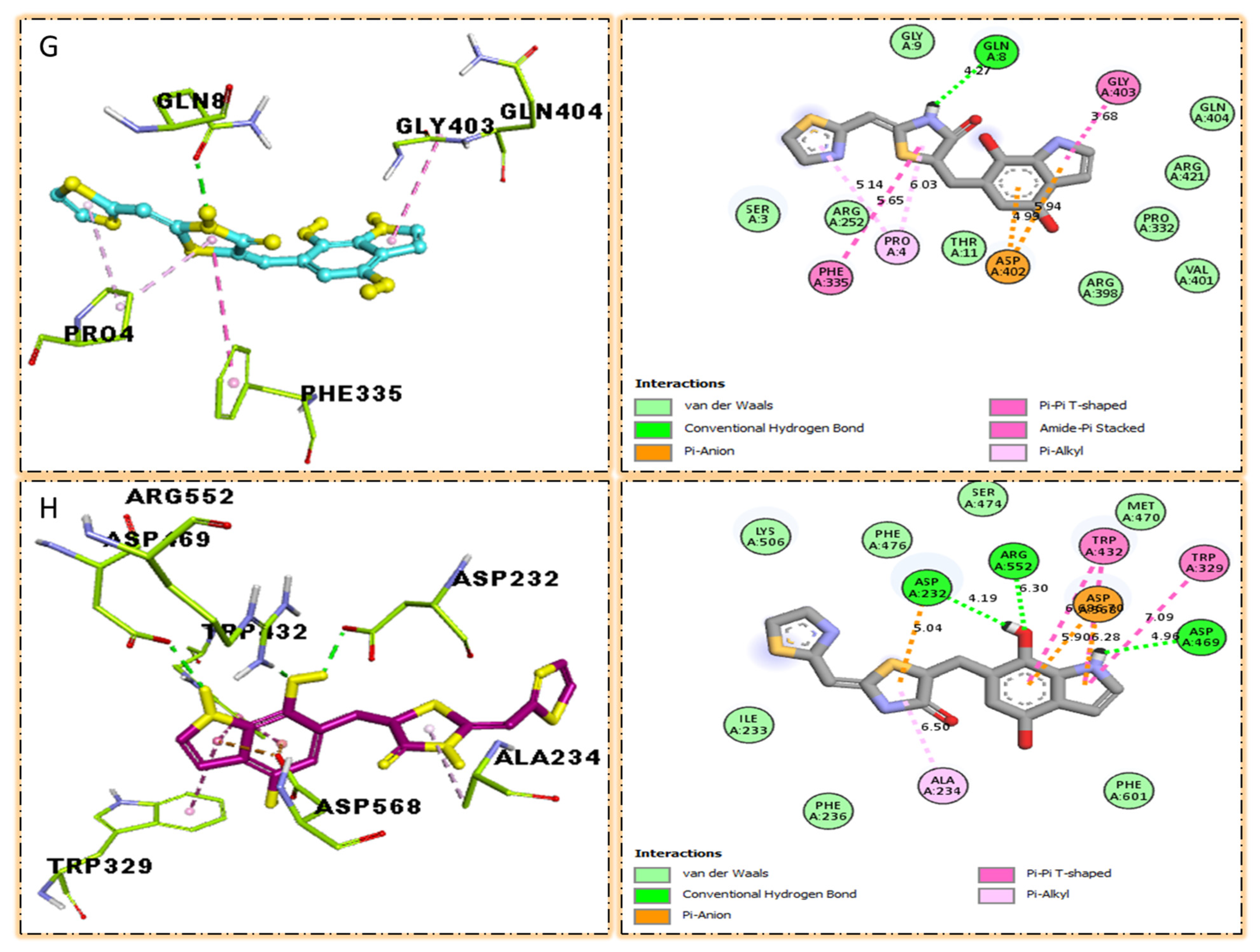
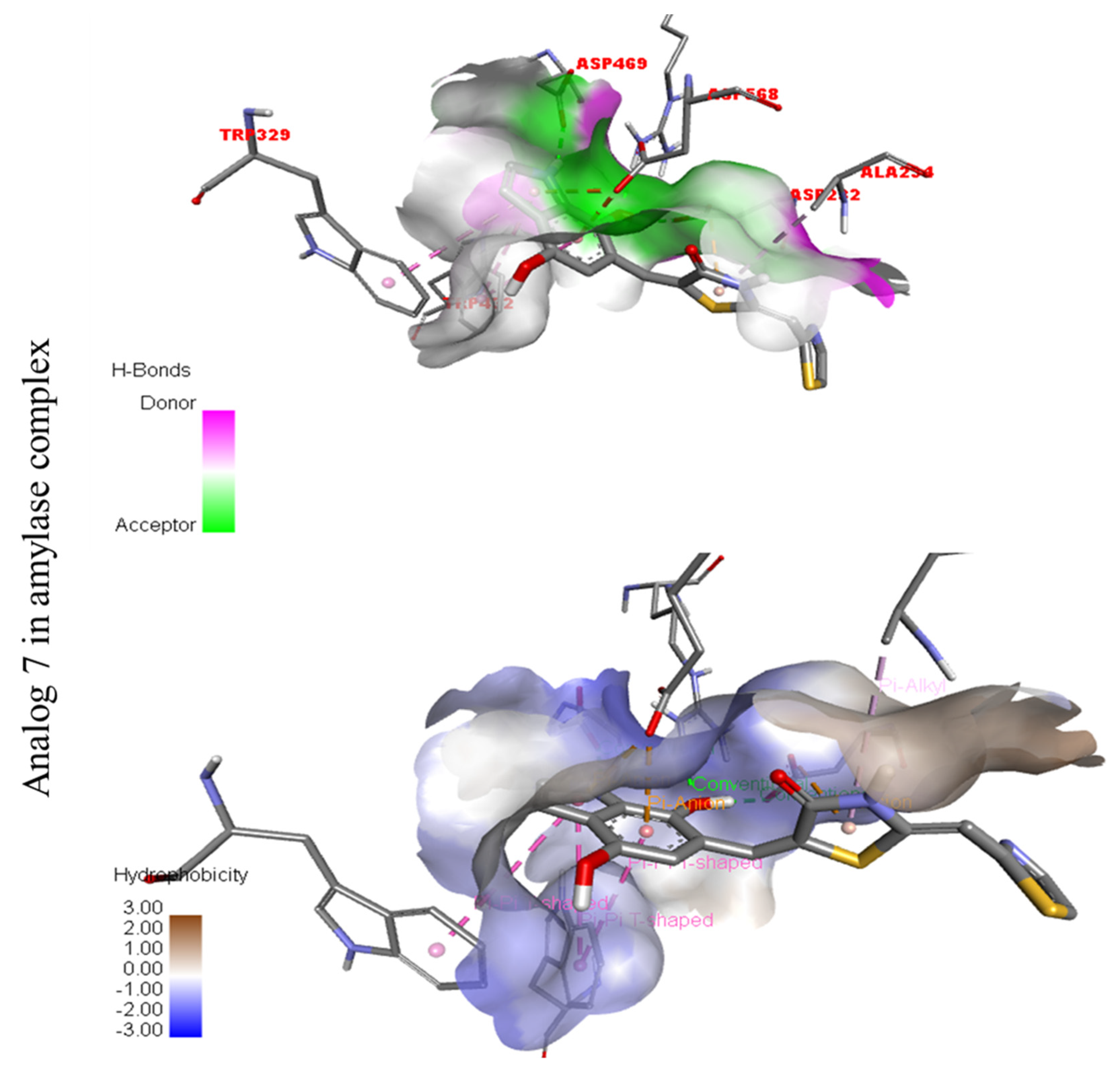
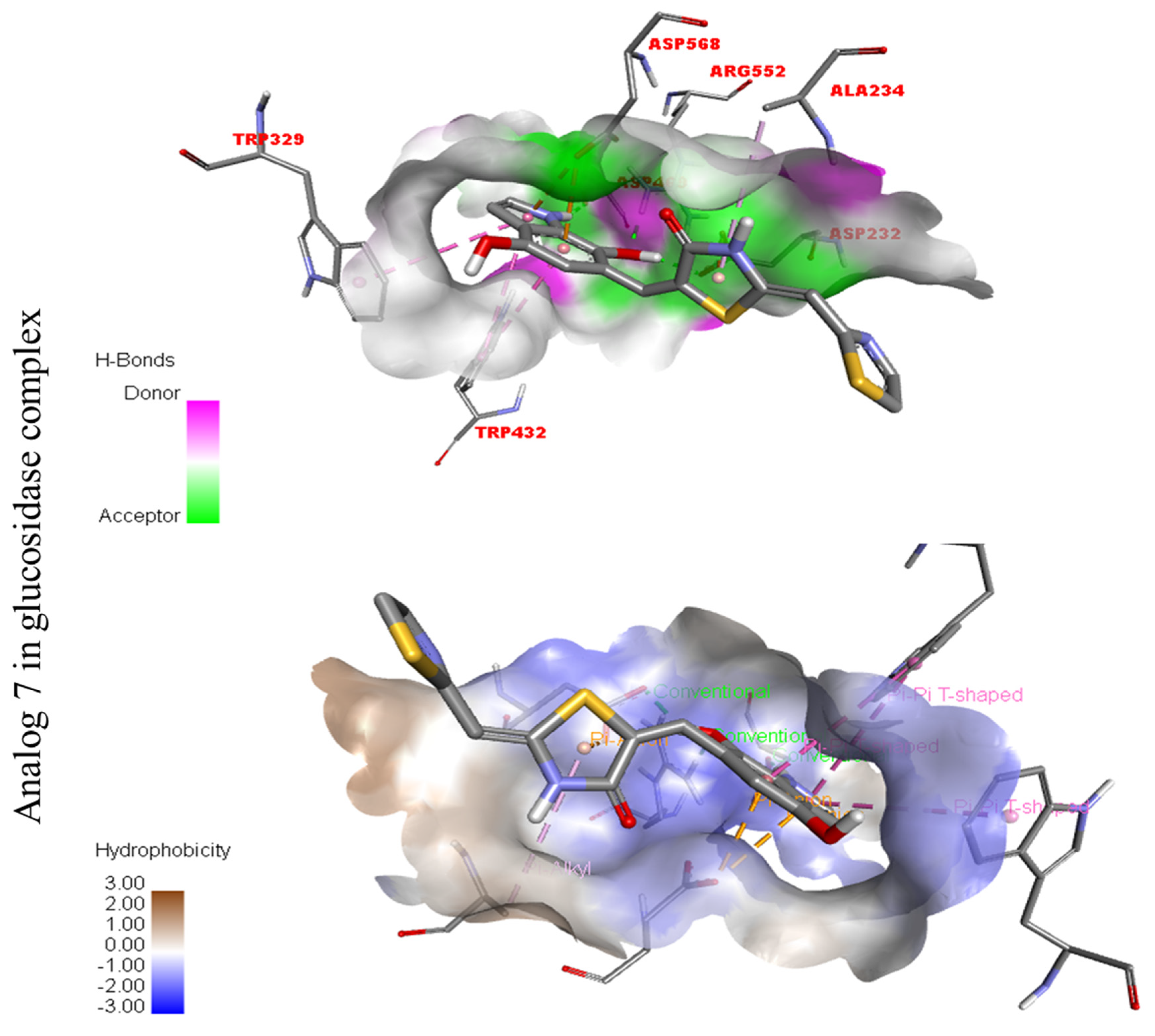
| C.No | R | Alpha-Amylase IC50 (µM ± SEM) | Alpha-Glucosidase IC50 (µM ± SEM) |
|---|---|---|---|
| 1 |  | 4.70 ± 0.20 | 5.80 ± 0.20 |
| 2 | 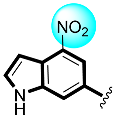 | 5.60 ± 0.30 | 6.20 ± 0.30 |
| 3 |  | 7.90 ± 0.40 | 8.70 ± 0.20 |
| 4 | 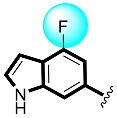 | 1.80 ± 0.70 | 2.70 ± 0.70 |
| 5 |  | 1.50 ± 0.05 | 2.40 ± 0.10 |
| 6 | 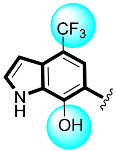 | 3.20 ± 0.70 | 4.50 ± 0.70 |
| 7 | 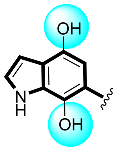 | 2.60 ± 0.80 | 3.50 ± 0.80 |
| 8 | 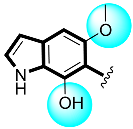 | 7.60 ± 0.60 | 8.70 ± 0.80 |
| 9 | 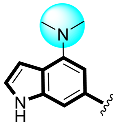 | 21.50 ± 0.30 | 23.20 ± 0.40 |
| 10 |  | 23.20 ± 0.10 | 24.60 ± 0.20 |
| 11 | 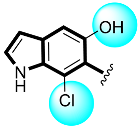 | 6.90 ± 0.10 | 7.85 ± 0.20 |
| 12 | 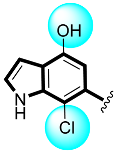 | 8.30 ± 0.20 | 9.10 ± 0.30 |
| 13 |  | 10.70 ± 0.20 | 11.50 ± 0.20 |
| 14 | 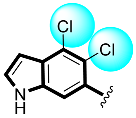 | 12.20 ± 0.30 | 13.50 ± 0.40 |
| 15 |  | 27.50 ± 0.70 | 28.40 ± 0.80 |
| 16 |  | 25.20 ± 0.20 | 26.70 ± 0.30 |
| 17 | 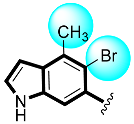 | 29.60 ± 0.40 | 31.50 ± 0.50 |
| 18 | 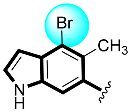 | 22.70 ± 0.50 | 23.30 ± 0.40 |
| 19 | 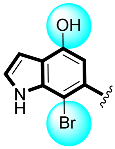 | 18.40 ± 0.60 | 19.80 ± 0.60 |
| 20 |  | 27.60 ± 0.80 | 29.40 ± 0.90 |
| Standard drug Acarbose | 10.20 ± 0.10 | 11.70 ± 0.10 | |
| Derivative-4 against Alpha-Amylase | Mode | Affinity Kcal/mol | Dist. from rmsdl.b | Best Mode rmsdu.b |
| 1 | –8.9 | 0.000 | 0.000 | |
| 2 | −8.6 | 3.609 | 9.526 | |
| 3 | −8.5 | 3.624 | 9.335 | |
| 4 | −7.5 | 2.164 | 2.537 | |
| 5 | −7.5 | 3.422 | 4.478 | |
| 6 | −7.4 | 2.391 | 3.678 | |
| 7 | −7.4 | 3.897 | 9.749 | |
| 8 | −7.3 | 3.565 | 4.889 | |
| 9 | −7.3 | 4.418 | 6.671 | |
| Derivative-4 against Alpha-Glucosidase | 1 | −8.3 | 0.000 | 0.000 |
| 2 | −8.1 | 4.486 | 8.557 | |
| 3 | −6.1 | 2.593 | 2.425 | |
| 4 | −7.8 | 5.607 | 8.503 | |
| 5 | −7.5 | 4.712 | 5.490 | |
| 6 | −7.2 | 3.462 | 8.651 | |
| 7 | −6.9 | 4.312 | 8.561 | |
| 8 | −6.6 | 4.544 | 8.481 | |
| 9 | −6.3 | 6.601 | 8.770 |
| Derivative-5 against Alpha-Amylase | Mode | Affinity Kcal/mol | Dist. from rmsdl.b | Best Mode rmsdu.b |
| 1 | −8.7 | 0.000 | 0.000 | |
| 2 | −8.4 | 2.790 | 3.819 | |
| 3 | −8.3 | 4.664 | 9.716 | |
| 4 | −8.3 | 1.667 | 2.673 | |
| 5 | −8.2 | 3.546 | 5.504 | |
| 6 | −8.2 | 3.440 | 9.446 | |
| 7 | −8.1 | 2.311 | 8.499 | |
| 8 | −7.6 | 12.600 | 14.644 | |
| 9 | −7.5 | 2.996 | 8.422 | |
| Derivative-5 against Alpha-Glucosidase | 1 | −8.4 | 0.000 | 0.000 |
| 2 | −8.2 | 4.674 | 8.547 | |
| 3 | −7.9 | 2.735 | 3.433 | |
| 4 | −7.7 | 6.861 | 8.414 | |
| 5 | −7.6 | 5.548 | 5.543 | |
| 6 | −7.5 | 3.605 | 4.620 | |
| 7 | −7.5 | 6.646 | 9.757 | |
| 8 | −7.3 | 16.481 | 17.897 | |
| 9 | −7.1 | 6.708 | 9.637 |
| Derivative-6 against Alpha-Amylase | Mode | Affinity Kcal/mol | Dist. from rmsdl.b | Best Mode rmsdu.b |
| 1 | −8.2 | 0.000 | 0.000 | |
| 2 | −7.9 | 3.424 | 8.760 | |
| 3 | −7.8 | 3.476 | 8.575 | |
| 4 | −7.6 | 4.232 | 8.661 | |
| 5 | −7.5 | 2.704 | 8.532 | |
| 6 | −7.5 | 3.446 | 4.449 | |
| 7 | −7.4 | 3.764 | 5.355 | |
| 8 | −7.3 | 4.575 | 9.502 | |
| 9 | −7.3 | 3.460 | 3.661 | |
| Derivative-6 against Alpha-Glucosidase | 1 | −7.4 | 0.000 | 0.000 |
| 2 | −6.7 | 3.671 | 4.774 | |
| 3 | −6.6 | 5.543 | 8.623 | |
| 4 | −6.4 | 7.883 | 8.785 | |
| 5 | −6.1 | 5.722 | 8.879 | |
| 6 | −6.1 | 6.616 | 9.405 | |
| 7 | −6.0 | 15.492 | 16.688 | |
| 8 | −5.9 | 13.640 | 18.295 | |
| 9 | −5.8 | 6.722 | 10.103 |
| Derivative-7 against Alpha-Amylase | Mode | Affinity Kcal/mol | Dist. from rmsdl.b | Best Mode rmsdu.b |
| 1 | −7.8 | 0.000 | 0.000 | |
| 2 | −7.7 | 3.224 | 8.360 | |
| 3 | −7.7 | 3.276 | 8.575 | |
| 4 | −7.6 | 4.132 | 8.661 | |
| 5 | −7.4 | 2.504 | 8.732 | |
| 6 | −7.3 | 3.646 | 4.549 | |
| 7 | −7.2 | 3.764 | 5.455 | |
| 8 | −7.2 | 4.875 | 9.302 | |
| 9 | −7.1 | 3.460 | 3.561 | |
| Derivative-7 against Alpha-Glucosidase | 1 | −7.3 | 0.000 | 0.000 |
| 2 | −6.7 | 3.471 | 4.674 | |
| 3 | −6.5 | 5.543 | 8.523 | |
| 4 | −6.4 | 7.783 | 8.785 | |
| 5 | −6.4 | 5.822 | 8.379 | |
| 6 | −6.3 | 6.316 | 9.505 | |
| 7 | −6.0 | 15.292 | 16.688 | |
| 8 | −5.5 | 13.440 | 18.295 | |
| 9 | −5.3 | 6.822 | 10.403 |
Publisher’s Note: MDPI stays neutral with regard to jurisdictional claims in published maps and institutional affiliations. |
© 2022 by the authors. Licensee MDPI, Basel, Switzerland. This article is an open access article distributed under the terms and conditions of the Creative Commons Attribution (CC BY) license (https://creativecommons.org/licenses/by/4.0/).
Share and Cite
Khan, S.; Iqbal, S.; Rahim, F.; Shah, M.; Hussain, R.; Alrbyawi, H.; Rehman, W.; Dera, A.A.; Rasheed, L.; Somaily, H.H.; et al. New Biologically Hybrid Pharmacophore Thiazolidinone-Based Indole Derivatives: Synthesis, In Vitro Αlpha-Amylase and Αlpha-Glucosidase Along with Molecular Docking Investigations. Molecules 2022, 27, 6564. https://doi.org/10.3390/molecules27196564
Khan S, Iqbal S, Rahim F, Shah M, Hussain R, Alrbyawi H, Rehman W, Dera AA, Rasheed L, Somaily HH, et al. New Biologically Hybrid Pharmacophore Thiazolidinone-Based Indole Derivatives: Synthesis, In Vitro Αlpha-Amylase and Αlpha-Glucosidase Along with Molecular Docking Investigations. Molecules. 2022; 27(19):6564. https://doi.org/10.3390/molecules27196564
Chicago/Turabian StyleKhan, Shoaib, Shahid Iqbal, Fazal Rahim, Mazloom Shah, Rafaqat Hussain, Hamad Alrbyawi, Wajid Rehman, Ayed A. Dera, Liaqat Rasheed, H. H. Somaily, and et al. 2022. "New Biologically Hybrid Pharmacophore Thiazolidinone-Based Indole Derivatives: Synthesis, In Vitro Αlpha-Amylase and Αlpha-Glucosidase Along with Molecular Docking Investigations" Molecules 27, no. 19: 6564. https://doi.org/10.3390/molecules27196564
APA StyleKhan, S., Iqbal, S., Rahim, F., Shah, M., Hussain, R., Alrbyawi, H., Rehman, W., Dera, A. A., Rasheed, L., Somaily, H. H., Pashameah, R. A., Alzahrani, E., & Farouk, A.-E. (2022). New Biologically Hybrid Pharmacophore Thiazolidinone-Based Indole Derivatives: Synthesis, In Vitro Αlpha-Amylase and Αlpha-Glucosidase Along with Molecular Docking Investigations. Molecules, 27(19), 6564. https://doi.org/10.3390/molecules27196564







